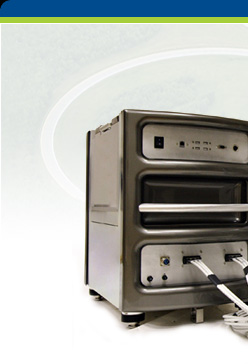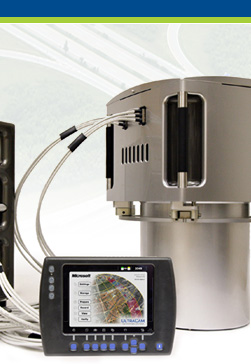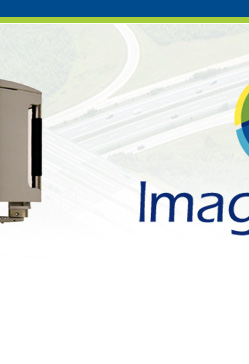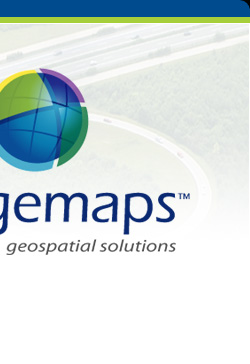|
ASPRS,
Milwaukee, May 2nd,
2011.
At ASPRS today, Vexcel Imaging launched UltraCam
Eagle, the latest large format digital aerial camera
in the
UltraCam line. The Eagle surpasses all
other digital aerial cameras to create a new
generation representing advanced optics, advanced
electronics and advanced storage. The Eagle
continues the award winning design principles of the
earlier
UltraCams and together with its global leading
tech-partners, Vexcel Imaging has pioneered the next
generation of sensor (CCD), optics and shutter
systems to develop, not just the next ‘new thing’,
but a radical
innovation in aerial imaging.
The UltraCam Eagle
offers a wider strip, faster frame rate, latest
5.2um CCD technology - developed by DALSA
specifically for remote sensing - with the highest
dynamic range maintained
throughout
the workflow, new optics designed specifically to
match the new CCD technology and, of course SSD
storage for compact design. There’s more; the
Eagle has two user-interchangeable lens systems
which transform the system’s capabilities in the
field between ultimate performance in either the
highest resolution engineering project or,
high-altitude orthophoto project. Never have
both diverse capabilities been combined in a single
camera system, such is the Eagle.
In collaboration
with navigation partner Applanix, Vexcel Imaging has
integrated a new INS/GPS system called UltraNav,
inside the sensor head. In fact, with the
Eagle, everything is inside the sensor head: no more
separate computer racks, storage units and cables
littering the inside of the aircraft.
Industry
Innovator
Innovation is par
for the course for Vexcel Imaging. Starting
from behind the traditional industry leaders in the
early 2000’s, Vexcel Imaging innovated its way from
being a leader in scanning film aerial photography (UltraScan)
to acquiring aerial imagery with its first UltraCam
model (UCD) in 2004. UCD pioneered concepts in
aerial imagery acquisition previously unthought-of
by the traditional digital camera engineers, which
overcame serious imagery distortions from using
multiple lenses with different principle points.
Vexcel Imaging developed the award winning
Syntopic
Exposure, which means all lens’ point in exactly
the same direction and have the same principle
point: a crucial photogrammetric principle for
combining multiple sub-images into a master image
corresponding to the traditional 23” frame.
Now, among their latest developments, Vexcel Imaging
has produced an analogue-to-digital-conversion (ADC)
board with performance surpassing anything in the
industry. This means that even with the
latest, optimal 5.2um CCD technology, Vexcel Imaging
boasts a SNR better than any other ADC in the
industry, which results in the best image dynamic
(grey scale range) yet available.
UltraCam
Eagle Exposure
Come and see the
next generation large format digital aerial camera
at Vexcel Imaging User Group Conference hosted by
Imagemaps and China reseller, Beijing Siwei, in
Beijing (27th May) or the Imagemaps booth
at South East Asian Survey Conference (SEASC), Kuala
Lumpur 22nd June – 25th June.
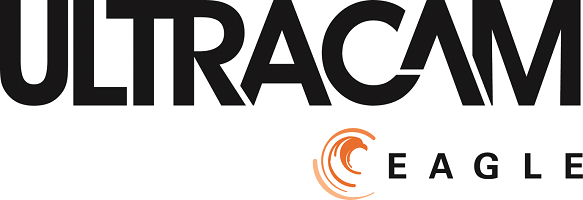
UltraCam Innovation
Among the leading
large format camera “super powers” today there
appears to be a pixel war with each new camera
having substantially more megapixels than its
predecessors. Is it justified? Do aerial surveys
need more pixels? Indeed it seems we do as these
large format cameras, which were once used for
nation-wide mapping and ortho-photo projects flown
at high altitude, are now exposing their lens cones
in the thick, bumpy atmosphere at 500m AGL straining
to get ground sample distances of 1.5” or better to
support engineering work.
Syntopic
Exposure
The
challenge in the first generation was to design a
camera system that would give equivalent quality and
coverage as the standard 23” frame offered by
traditional film cameras, such as RC30 and RMK TOP.
With the CCD technology available at the time this
required exposing multiple CCDs, each with its own
lens cone, to produce the full-size frame (master
image). The first attempt at multiple CCDs by Z/I
Imaging (2002) used four cones firing
simultaneously, but each with a slightly different
viewing angle across the flight line. The major
drawback being that each cone has a different
principle point and different perspectives thus
introducing a variable scale error which increases
further away from the centre of the master image.
In
its pioneering work introducing the first UltraCam
(2004), Vexcel Imaging broke free of traditional
design thinking to introduce
Syntopic
Exposure – an innovation whereby four nadir
looking, in-line lens cones fired sequentially,
micro-seconds apart, to expose sub-images with the
same principle point and perspectives, thus giving
remarkable geometric stability in the resulting
master image.
Monolithic Stitching
Until recently,
all cameras produce their master image from
stitching together multiple sub-images using
overlap. The four cones of the UltraCam expose onto
a total of nine CCDs arranged in a matrix of 3 rows
by 3 columns producing nine sub-images. One of the
cones is designated the master, which exposes the
four corner positions of the matrix, while the other
cones expose the middle row, middle column and
centre position. All nine sub-images overlap one
another by several pixels from which thousands of
tie points are collected, but the four corner
sub-images fix the initial geometry of the PAN
layer, thus providing rigid stability. Next, one of
the colour channels (green), which covers the full
frame, is used to transform the PAN layer into the
full frame. Defining the frame by the four corner
positions, from a single lens cone, into
which the other sub-images are matched, and
transforming this into the colour channel, is called
Monolithic
Stitching. This technique delivers excellent
geometric accuracy even in difficult terrain
situations, like desert and water dominated images,
where traditional tie point selection often fails.
Monolithic
Stitching is an example of using software techniques
to optimize the performance of the hardware.
Improvements are continually made to the Monolithic
Stitching software which means the overall
performance of the camera is improved without
necessitating expensive upgrades to the hardware.
Syntopic Exposure
and Monolithic Stitching are the design innovations
separating the UltraCam from traditional approaches
to building a digital aerial camera and underpin the
awards to Vexcel Imaging announced at MAPS 2010, and
Geospatial World Forum (GWF) in
Hyderabad, January 2011.
Monolithic vs Multiple CCD Arrays
Some new camera
designs from traditional vendors (e.g. Z/I Imaging
2010) offer large frame sizes with a single
(monolithic) CCD, but the compromise to achieve this
means using older, somewhat noisy, CCD technology
originally developed for medical imaging. Even with
a lower spec, it is impossible to manufacture an
array of this size without defects (dud pixels) and
both effects combine to impact the radiometric
quality.
In
the latest camera innovation from Vexcel Imaging,
the UltraCam
Eagle
continues to leverage the benefits of Syntopic
Exposure and Monolithic Stitching to offer the
largest digital frame of more than 260MP. Based on 9
CCD arrays of the latest 5.2um remote sensing
technology and Vexcel Imaging’s implementation of
Silent
Technology, the
Eagle
boast a significantly lower signal to noise ratio
than any other digital aerial camera. Silent
Technology is engineered in the critical
Analogue-to-Digital Conversion (ADC) electronic
board that reads out the data from the CCD array.
This board is critical because its SNR defines the
radiometric quality of the digital image, and
because there are so many of them e.g. UltraCam has
9 ADCs, and Z/I Imaging’s latest DMCs require 16
ADCs to readout from the monolithic CCD.
The award-winning
design innovations pioneered by Vexcel Imaging means
the UltraCam line is infinitely scalable. UltraCam
can always benefit from the latest CCD technology,
even though the physical size of these arrays is
typically smaller than can be produced from an older
array. Until such time as we decide enough is enough
with ever expanding frame sizes, Syntopic Exposure
and Monolithic Stitching guarantee on-going
improvements in aerial imaging productivity based on
an already proven design.
|
|
